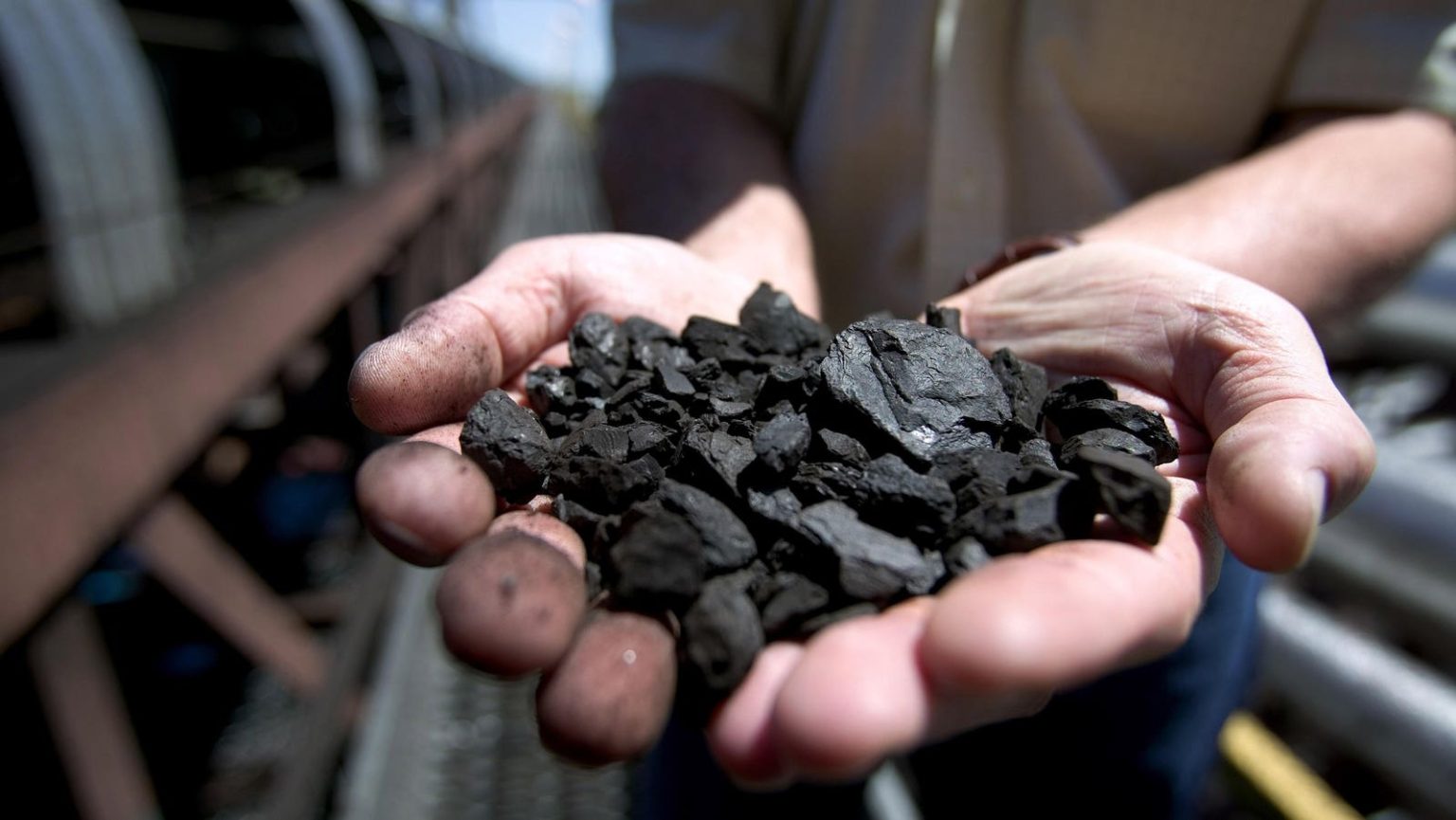Taking a closer look at the guru’s interest and trading activity surrounding 4 prominent US met and thermal coal producers
By Horse Poor Investor
Summary
- Mohnish Pabrai is an investment guru who mirrors Warren Buffett’s strategy when stock picking.
- His trading activity has lately revolved around four coal providers.
- The coal market has been softening lately and shows volatility, however, it is still robust enough to provide value investing opportunities in the long term.
Investment guru, author and philanthropist Mohnish Pabrai emulates Warren Buffett (Trades, Portfolio) in his disciplined value investing strategy. Pabrai started his investing journey after selling his IT consulting company, Transtech, for $20 million in 2000. He currently operates Dhando Holdings and Dhando Funds and manages the Pabrai Wagons Fund and Pabrai Investment Funds.
Although the Pabrai Investment Fund site is restricted, his philosophies and interests (including great book recommendations, covering investing and a wide range of other topics) can be found on his website, Chai with Pabrai. More Pabrai insights can be found in his book, “The Dhando Investor.”
Pabrai typically concentrates on specific sectors at a time. Recently, he has focused on coal stocks within the materials and energy sectors.
The purpose of this analysis is to discuss the metallurgical and thermal coal markets and Pabrai’s trading activity with four stocks: Alpha Metallurgical Resources Inc. (AMR, Financial), Arch Resources Inc. (ARCH, Financial), Console Energy (CEIX, Financial) and Warrior Met Coal Inc. (HCC, Financial).
The chart below shows the year-to-date performance of these four stocks versus the S&P500 index:
AMR Data by GuruFocus
The markets for coal
Coal markets in both the U.S. and globally are highly competitive and cyclical due to weather and the nature of commodity pricing. Overall, China and India are the world’s largest coal consumers, producers and importers, which may explain Pabrai’s recent interest as he is knowledgeable about the economy in India.
In 2023, global coal consumption hit a record high, rising by 120 million tons (1.40%) compared to 2022. Notably, China and India drove this trend, accounting for 70% of total consumption. However, demand has slowed recently due to weak global economic activity, increased renewable electricity adoption and lower natural gas prices.
Coal prices are expected to decline by 28% during 2024 and by an additional 1% in 2025. Long term, the coal market faces downward pressure due to stricter global policy regulations and international agreements that incentivize clean energy and encourage the transition away from fossil fuels. Businesses in this industry experience restricted access to capital due to these concerns. Despite these pressures, the coal market has been remarkably resilient due to global supply decreasing more rapidly than demand, which may cause price spikes over the next 10 to 12 years during the phaseout process, making for a volatile market.
Pabrai’s recent trading revolves around metallurgical and thermal coal production. These products are subject to commodity price risk and have little differentiation. However, metallurgical coal is of higher quality (in terms of properties such as high carbon content and low ash, moisture, sulfur and phosphorous content) than bituminous coal. Thus, prices and margins for metallurgical coal are typically higher than those for thermal coal.
Metallurgical coal
The outlook for metallurgical (or met) coal, also known as coking coal, closely parallels that of the steel industry. The steel industry employs coal coke produced from metallurgical coal to smelt iron ore into steel. The high temperatures generated during the combustion of coal coke contribute to steel’s strength and flexibility. Approximately 0.60 tons of metallurgical coal is needed for every ton of steel produced. Global steel production annually consumes approximately 1 billion tons of metallurgical coal, representing 15% of total worldwide coal usage. A significant amount of U.S.-produced metallurgical coal is exported and competes with international sources from China, India, Australia and Indonesia. The U.S. produced approximately 72.40 million tons of met coal in 2023. Lower volatility met coal historically holds greater value and commands higher prices due to its higher coke yield when heated.
Demand for steel in the U.S. surged after 2020, in part, due to steel tariffs imposed by the Trump administration and due to production slowdowns resulting from plant closures and supply chain disruptions during the Covid-19 pandemic, resulting in skyrocketing prices, also increasing prices for the metallurgical coal used to produce it. Since the latter half of 2022, pricing has returned to normal levels. At present, monetary tightening and geopolitical tensions challenge steel demand and prices. Steel prices are being affected by the Chinese economy’s property sector slowdown and are expected to remain volatile, depending on Chinese stimulus measures. Steel prices in 2024 are forecasted to be around $740 per metric ton and could decrease to $520 per metric ton by 2033. Demand is stronger in India and other emerging markets. Global steel demand is projected to rebound in 2024 and increase by 1.2% in 2025.
Thermal coal
The future also appears challenging for thermal coal producers, mostly due to lower profitability and environmental policies proposed by various international organizations and initiatives such as the World Economic Forum and the United Nations’ Paris Agreement. Despite these pressures, thermal coal is nearly 7 times more prevalent than met coal. The U.S. produced approximately 502 million tons of thermal coal in 2023. The energy content of thermal coal significantly affects its price. Consumers prefer higher-energy coal, which usually commands higher market prices. Eastern and Midwest U.S. coal have higher heat values than Western U.S. coal.
Thermal coal, also known as steaming coal, is mostly used to create electricity, but it is also used for industrial purposes like fueling boilers in paper production and kilns in cement production. The U.S. electricity load growth is expected to jump by 81% over the next five years, driven by data centers, industry, electrification and hydrogen production. The global electricity market is expected to grow by a 3.40% compound annual rate through 2026.
However, renewables are forecasted to comprise a significant portion of this growth rate.
In the current domestic energy environment, thermal coal has faced competition from natural gas, as natural gas prices have declined due to high utility stockpiles after a mild winter. However, U.S. thermal coal exports have increased by approximately 26% in the first two months of 2024, compared to 2023. Thermal coal remains one of the most profitable commodities to trade in Asia, according to S&P Global Commodity Insights. This may explain Pabrai’s recent interest in Consol Energy, which is primarily focused on the thermal coal market.
Pabrai’s coal darlings
Of Pabrai’s four coal investments, Alpha Metallurgical Resources, ARCH Resources Warrior and Warrior Met Coal lean heavily toward met coal production, whereas CONSOL Energy produces a significant amount of thermal coal. Warrior Met Coal is the only pure-play player of the four companies.
The Francis Scott Key Bridge collapsed on March 26, impacting export operations of both Arch Resources and CONSOL Energy during the first quarter. The event forced the closure of the Port of Baltimore, suspending operations of both the CSX Curtis Bay Terminal used by Arch Resources and the CONSOL Marine Terminal operated by CONSOL Energy. Both terminals reopened on May 21.
Below is a summary of Pabrai’s trading activity in the four companies:
Below are brief descriptions and evaluations of these companies:
Alpha Metallurgical Resources, a Tennessee-based mining company known formerly as Contura Energy, emerged in 2016 when Contura acquired the assets from the bankruptcy proceedings of Alpha Natural Resources. In February 2021, the company changed its name from Contura Energy to Alpha Metallurgical Resources to more accurately reflect its focus on producing metallurgical coal as a critical feedstock for steel production. Over 98% of the company’s revenue generation is attributed to its met operating segment. The company only produces thermal coal as a byproduct of met coal. The company’s coal-producing operations consist of 15 underground mines, seven surface mines and nine coal preparation plants distributed throughout Virginia and West Virginia.
Since the latter part of August 2021, the share price has surpassed the growth rate of the S&P 500 index by nearly 700%. Share valuation reached a peak in February, but has been declining since that point. The company missed first-quarter net income and earnings per share estimates by 12.10% and 11.40% respectively, citing the softening of metallurgical markets and uneven economic conditions. Alpha Metallurgical Resources has the highest returns on assets and invested capital of the four companies. It also has the highest total return of the four. According to GuruFocus, the stock is still significantly overvalued by nearly 74%.
ARCH Resourcesis a St. Louis, Missouri-based company, originally founded in 1969 as Arch Coal, that focuses on metallurgical and coking coal but has both met and thermal coal operating segments generating 60% and 40% of revenue respectively.
Arch Coal filed for Chapter 11 bankruptcy protection in January 2016, won court approval to erase nearly $5 billion in debt and began trading on the New York Stock Exchange with the symbol ARCH. In 2020, the company changed its name to Arch Resources to reflect its transition to producing metallurgical products for the steel industry.
Currently, the company has mining and production operations in West Virginia, Wyoming and Colorado, with eastern facilities producing met coal and western facilities producing thermal coal. Output from its West Virginia facilities was challenged by the Port of Baltimore closure during the first quarter as the company relies on the CSX Curtis Bay Terminal for distribution.
Since October 2016, the share price has surpassed the growth rate of the S&P 500 index by approximately 20%. The company missed first-quarter net income and earnings estimates by 13.60% and 14.60% respectively. According to GuruFocus, the stock is modestly overvalued by approximately 26%.
CONSOL Energy is a 160-year-old, Canonsburg, Pennsylvania-based producer and exporter of high-BTU bituminous coal primarily serving the electric power generation market. The company started trading publicly on the NYSE in November 2017 after separating its coal and natural gas operations into two separate publicly traded companies: CONSOL Energy and CNX. CONSOL’s two operating segments include the Pennsylvania Mining Complex (PAMC), which consists of three mines, a centralized coal processing facility and a train loadout facility accounting for over 90% of 2023 revenue, and the CONSOL Marine Terminal, accounting for 4% of sales. CONSOL’s operations span Pennsylvania, West Virginia and Maryland. Like Arch Resources, CONSOL’s operations in the first quarter were disrupted by the closure of the Port of Baltimore, which houses the company’s Baltimore Marine terminal.
Since the company went public, the share price has risen by 385% compared to the S&P 500 index’s rise of 112% over the same period. The company surpassed first-quarter revenue, net income and earnings expectations by 9.30%, 42.5% and 43% respectively. Of the four companies, CONSOL Energy has the highest gross and free cash flow margins, the highest return on equity and a remarkable 21.27% earnings yield. According to GuruFocus, the company is significantly overvalued by over 30%.
Warrior Met Coal is a Brookwood, Alabama-based company publicly traded since 2016 that produces and exports metallurgical coal from its underground mines in Southern Appalachia’s coal seam. The company sells to steel manufacturers in Europe, Asia and South America. Although Warrior Met Coal claims to be a pure-play met coal producer, it generates ancillary revenue from selling natural gas extracted as a byproduct from its underground coal mines and royalty revenues on leased properties. Its Warrior Met Coal Mining operations consist of two active mines capable of producing 8 million tons of met coal annually at full capacity. It is also developing an additional facility, the Blue Creek Mining Complex, scheduled to open in 2026. GuruFocus deems this stock as significantly overvalued with a price exceeding the value by nearly 70%.
Since the company went public, the share price growth rate has exceeded that of the S&P 500 by 172%. The company surpassed first-quarter revenue expectations by 6.70%, but fell short of net income and earnings per share expectations by 8% and 4% respectively. Of the four companies, Warrior Met Coal has the highest operating and profit margins.
Below is a summary of fundamentals for the four companies as of March 31:
As reflected in the above table, the return metrics are nothing to write home about, but that is understandable given the current coal market volatility and geopolitical pressure to phase out the dirty rock. However, all companies appear to be operating efficiently with little debt and good return metrics. I am inclined to pick CONSOL Energy as the best value of the four given its most recent performance; however, investors may want to wait for a pullback to a more reasonable price level. As I note in all reports, please do your research based on investment goals as I am not a financial advisor and this article is intended only for informative purposes and should not be construed as investment advice.
Takeaways
Pabrai is a Buffett-style investor who has shown interest in four companies in the met and thermal coal industries in the past year and a half. The coal market reached a peak in 2023, but has slowed since that time due to the economic condition in China and geopolitical pressure to reduce the output of this notoriously dirty fuel. Still, due to increased energy and electricity demands, the market is expected to continue to be robust enough to support met and thermal production through the mid-2030s. The four companies are all good performers with solid fundamentals and can yield returns for those interested in long-term investments over the next 15 years.
Disclosures
I am/we currently own positions in the stocks mentioned, and have NO plans to sell some or all of the positions in the stocks mentioned over the next 72 hours.
Read the full article here
















